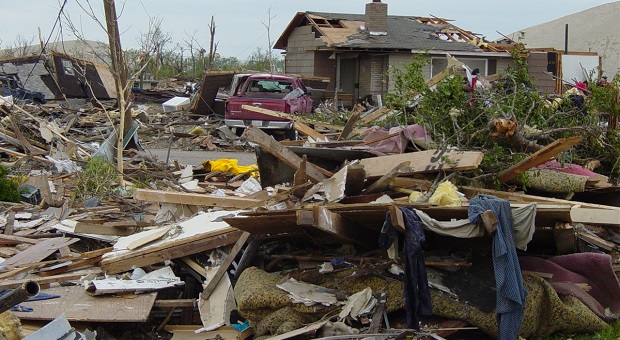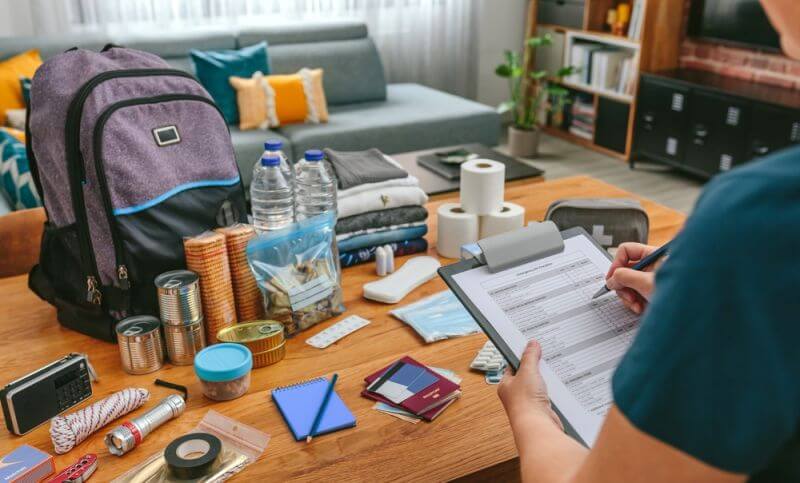If you’ve ever heard that an ounce of prevention is worth a pound of cure, then you may well agree that bugging out now is far superior to even the best contingency plan for bugging out after the SHTF.
The best bug out location in the world is the one you’re already at, so if relocating to your intended bug out area is an option for you and your family, you may want to go for it now and get the move out of the way.
Alternatively, you may have decided that you’ve just had enough of the local disasters in your area. You may be tired of flooding, or of annual hurricanes, frigid winters or tornadoes and other disasters local to your area.
Whatever the case, if you’ve decided that where you currently live isn’t where you want to be stuck if SHTF, you should consider relocating now. Relocation can be tricky business, especially when it comes to moving your job and/or family, but the potential rewards can make all the effort well worth it.
When you start selecting a suitable property, either for bugging out later or for relocating to now, here are some basic criteria to keep in mind:
Water Access
A good property for bugging out or relocating to should have a clean source of water, either from a surface source or from a well drilled on the property. Ideally, a stream or portion of a river flowing through the property would provide abundant water and additional wildlife. Water is life, not just for you but also for your crops, for the local wildlife, and for any livestock.
Quality Soil
Properties with abundant grasslands, meadows, and fertile soil are valuable for the potential cropland you can make use of, as well as the biodiversity that results. Healthy grasslands and woodlands can support an abundance of wildlife, including deer and rabbits.
Test the soil in several areas of the property; you’ll want soil in the 6.0 – 7.0 pH range, with plenty of nitrogen, phosphorous, potassium, sulfur and other trade nutrients. Also, look for soil that drains well but isn’t too rocky, preparing overly-rocky land for crops is hard work.
Resources
Aside from water and quality soil, other valuable resources to look for in a property include forested areas, as well as land with fruit and nut trees or small orchards. Hills and mountainous areas can provide strategic outlooks to maintain the security of the property, while a strategic resource such as coal could wind up being more valuable than gold.
Other useful resources may include a stream or river strong enough to harness hydroelectricity, and good sun exposure for solar energy or hills or areas suitable for collecting wind power.
Location
This might be a bit of a no-brainer for most, but the location of the property is very important. Not only will the location determine what resources are available, location also determines how many people you’re likely to have to deal with. The best locations are far from urban city centers and other densely populated areas, thus minimizing the number of people who might threaten your location and the amount of social unrest in your area.
Shelter
Properties that already have shelters, particularly houses, may come with a higher price tag on average, but there are a number of potential benefits to consider. First and foremost, a property that is developed or semi-developed is easier and quicker to move in to.If you’re relocating your family, a property with a habitable house may be more attractive than a bare parcel of land with building rights.
Permits & Restrictions
An important consideration, and one not to be forgotten when you’re considering a property, is what you are and are not allowed to do under the law. Look for properties that have few or no restrictions on what you can develop there, and ensure that you purchase water rights in addition to the surface rights. The underlying mineral & oil rights are often severed property in many areas, so make sure you know what you’re purchasing as well.
Contingency Plan B
A good initial BOL (Bug Out Location) is an excellent first line of defense to have in place in the event of a serious emergency, but depending on what goes wrong, your initial BOL may not be accessible or it may not remain secure.
In the aftermath of any serious societal breakdown, a certain period of lawlessness can be reasonably expected, and during that time your BOL will be vulnerable to detection and being targeted by various marauding raiders. Alternatively, your BOL may itself be subject to severe flooding, sudden fire, or other unexpected disasters that render it unusable.
In any event, it’s an excellent idea to have a secondary contingency plan, your Plan B, in place just in case of such additional, unforeseen circumstances. Your secondary BOL may not be as well stocked, supplied and developed as your primary BOL, but it should be set up and prepared with many of the same basic supplies.
Apply all the same basic criteria to selecting your secondary BOL that you applied when choosing your initial BOL, including accessibility to clean water, available natural resources, amount of wildlife, climate and environment, etc.
The distance of your secondary BOL from both your home and your initial BOL is another factor to consider. More distance between your locations might help ensure their individual safety when it comes to localized disasters or other regional phenomena, but larger distances also mean you have to travel further to get between locations.
A few hundred miles, in a car over open highways, may seem reasonable, but imagine making that trip over clogged or damaged roads, or having to take multiple detours or obscure back roads.
This article has been written by Gaia Rady for Survivopedia.









Ivonne | October 28, 2013
|
Hi,
I need help with the relocation subject.
John | October 29, 2013
|
It looks like a lot of extra money ,short term,or a little spread out.
John
Gerald Dearing | October 28, 2013
|
What is an SHTF and/or BOL. Many of the accronems you use are unfamiliar to me!
admin | October 28, 2013
|
S…. hits the fan and Bug out location
mrbill | October 28, 2013
|
There is not much choice in the Texas panhandle. No surface water, dry as H—. 15 grand to drill a well. I live in a town of 20,000 mostly good people. Hunkering down here is the best option. It is hundreds of miles to an alternitive. I keep the hot-tub full and the pantry stocked and guns loaded.
J L Gordon | October 30, 2013
|
I agree. Build rain barrels for your gutters. Best people in the world. Shoot the trouble makers. Join together form and create defense grips to fight bands of thugs.
Linda | October 28, 2013
|
Most would have the brains to have some fuel to get to said location however, if the electronics on a modern vehicle go ka-put, you ain’t going anywhere. There are numerous scenarios where vehicle electronics could be affected such as solar flares or purposeful disabling by government factions. An old well maintained truck from long ago might be a worthy investment.
…~*~…
BobG | October 29, 2013
|
Here’s one no one talks about: Get a place on a small lake or large pond with fish. When I was growing up, we had a cottage on a medium sized lake in Northern Wisconsin. Even if it has small perch, five or so inches long, they are plentiful and easy to catch (even legally). Plenty of water and food right at the front door. We had 80 acres, most of one forty was in the lake tho. Plenty of firewood and a garden.
Big D | October 29, 2013
|
Missing something from the section on Shelter:
“But if you have the desire, and means, to b”
I assume ‘b’ is the start of the word build, but what goes after?
Gary | October 29, 2013
|
Wish I had the money for BOL. VACANT land around here (outside urban areas) is $10-15k per acre minimum. That doesn’t count puting in a well or buying the water rights. I have enough money problems with just keeping the larder and bullets stocked. I would rather have an underground (undetectable) shelter that I could bug out to. But that costs money too.
Linda | October 31, 2013
|
Get 20 like minded people together each with 20 grand and get a chunk of land, at least you’ll have a place to go to.
…~*~…
ESSM | November 2, 2013
|
PURE MICHIGAN ! b.o.l. club being formed.and 1 year memberships available. $5,000.00/yr. location secret. 100 miles from any large city,3 acre pond surrounded by hundreds of acres of private property, many acres are woods! I only own 10+ acres of it but if we had to scatter,we could.on dirt rds. ,close to other state border. plenty of furtile farm land and wild game. perked and cleared for septic system(s) Wanting to get ready and have the work done,need cash assistance. I have owned land over 10 yrs. for this very purpose. land is not for sale only rent and only to approved persons.must have camper and be fully prepared/stocked! each membership good for only one person. first n only posting. send name n facebook info if your ready.
Michiganiac | June 27, 2014
|
Lwr or upper p?
griffin | October 30, 2013
|
I was thinking over the possibilities of a bug-out habitat that would offer extended shelter yet be hard for marauding gangs to plunder and concluded that a boat offers lots of possibilities here in Florida. With the economy as bad as it is folks are having to sell such assets and there’s a lot of deals. In fact, if you got a big enough one you might even go the 50 miles to the Bahamas until the worst blows over. Lots of people live aboard their boats, which can anchor for free in tidal waters; sell the house and move into your bug-out nest now.
Ivonne | November 4, 2013
|
How about Central Oregon 3000 above sea level and one hr driving to close town, the “Oregon Outback”. Agricultural zone, with electricity and water. Land is 40 AC with dirt road and maybe 2 mile from a Hwy.
Rick | November 12, 2013
|
I definitely agree with having a secondary BOL. Far too many preppers get locked into the idea of 1 BOL and end up shooting themselves in the foot when they cant get there in a disaster.